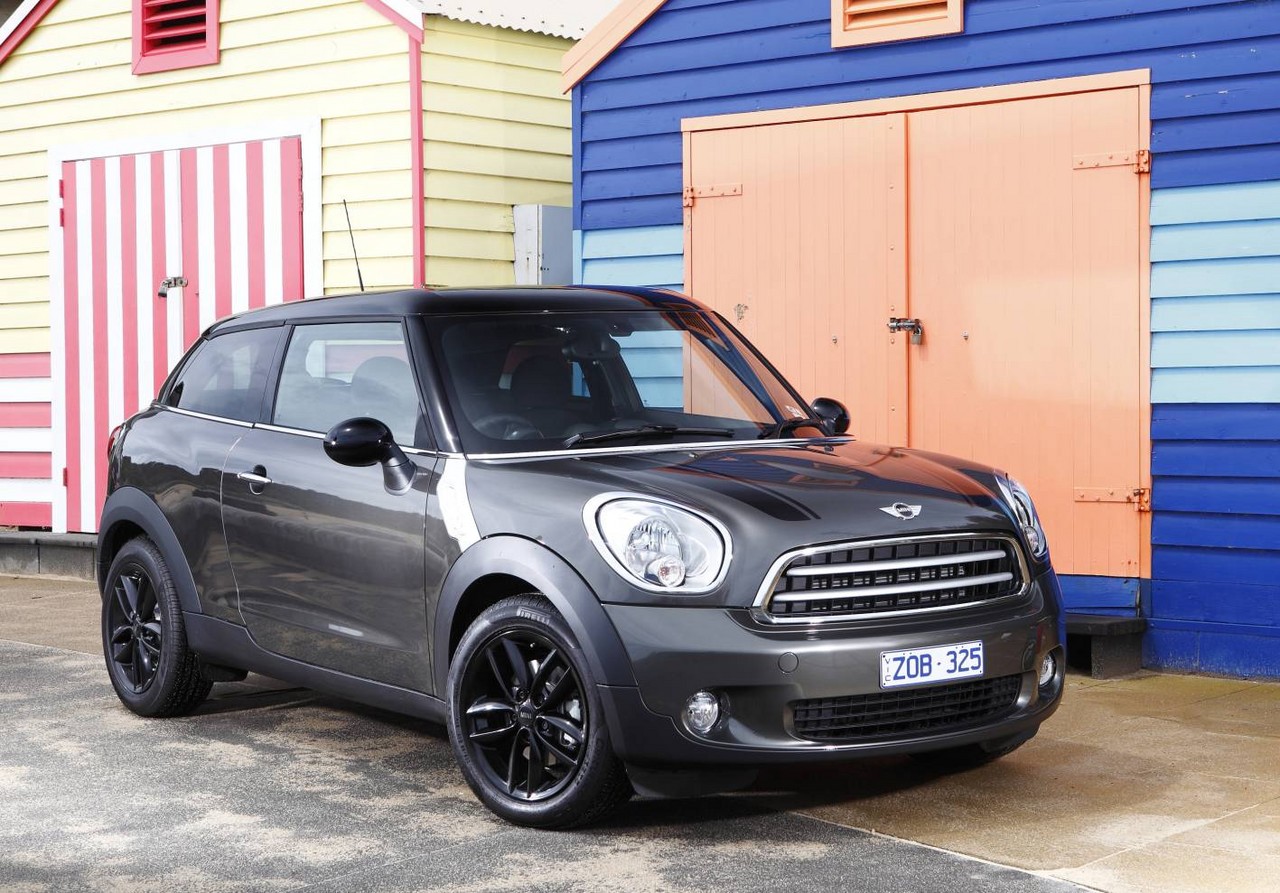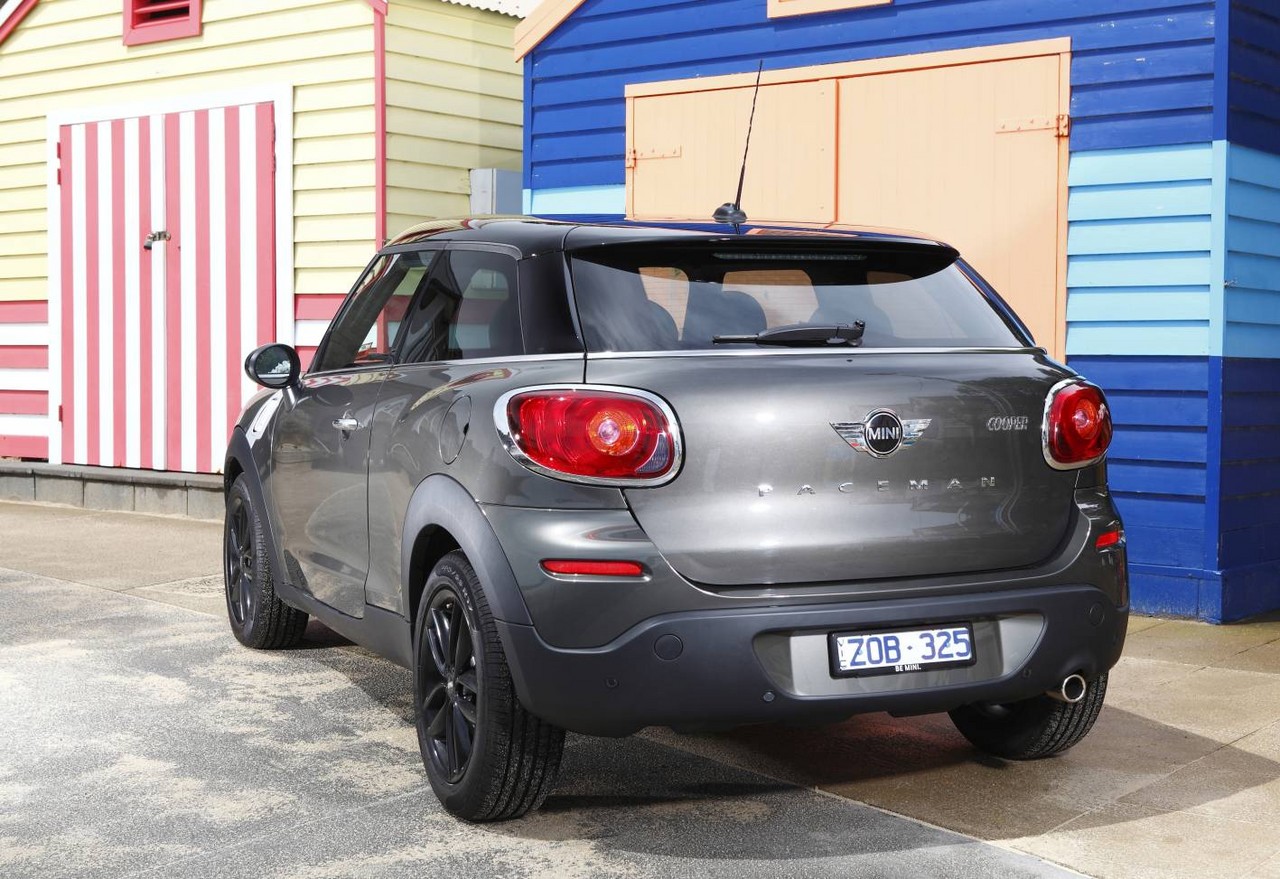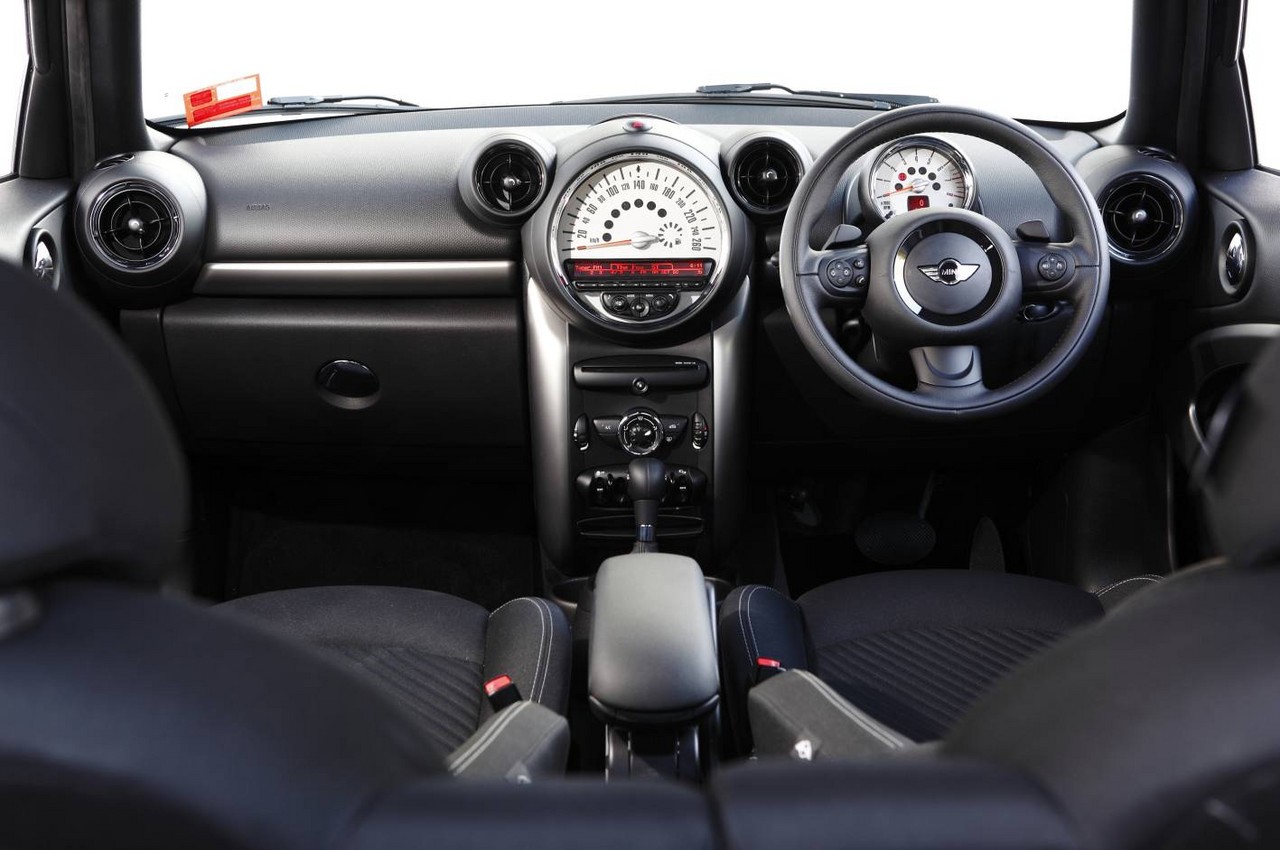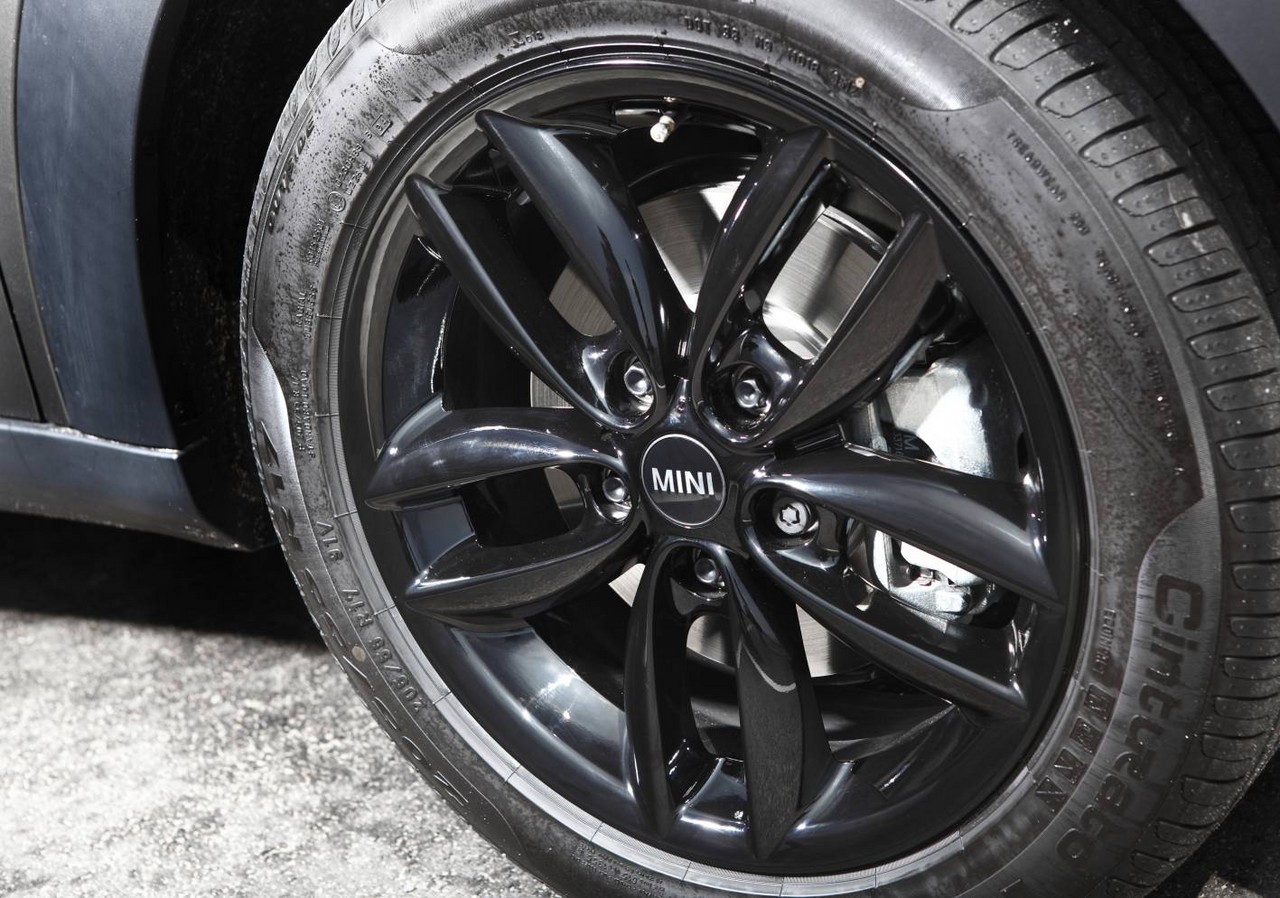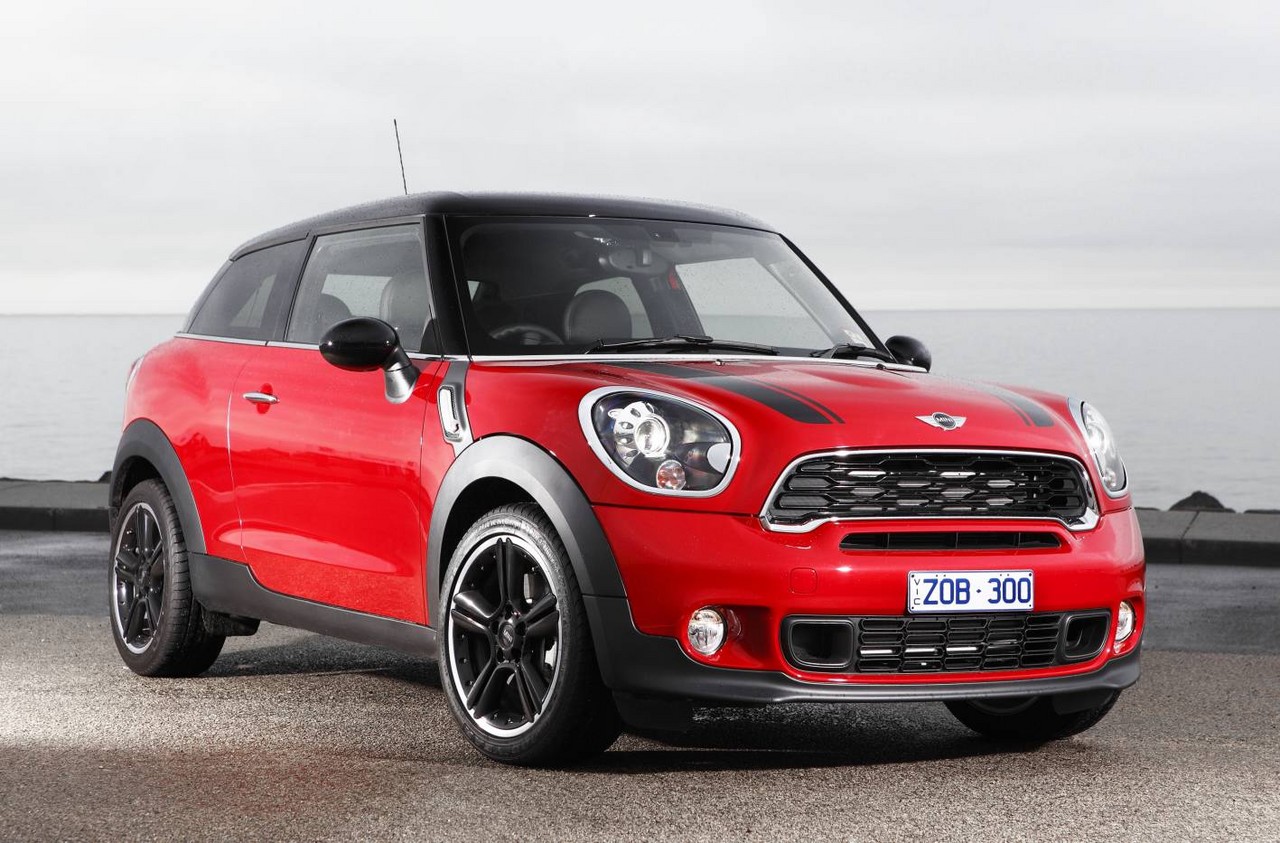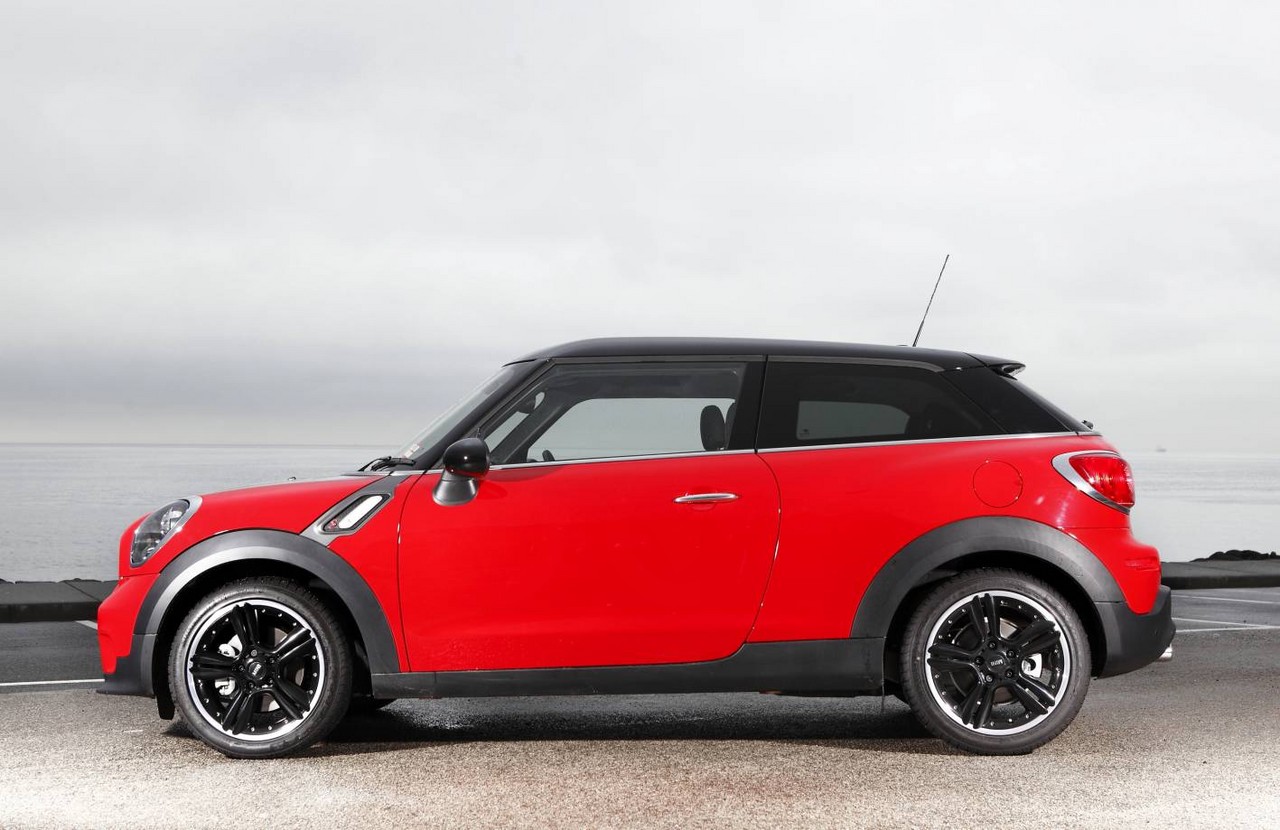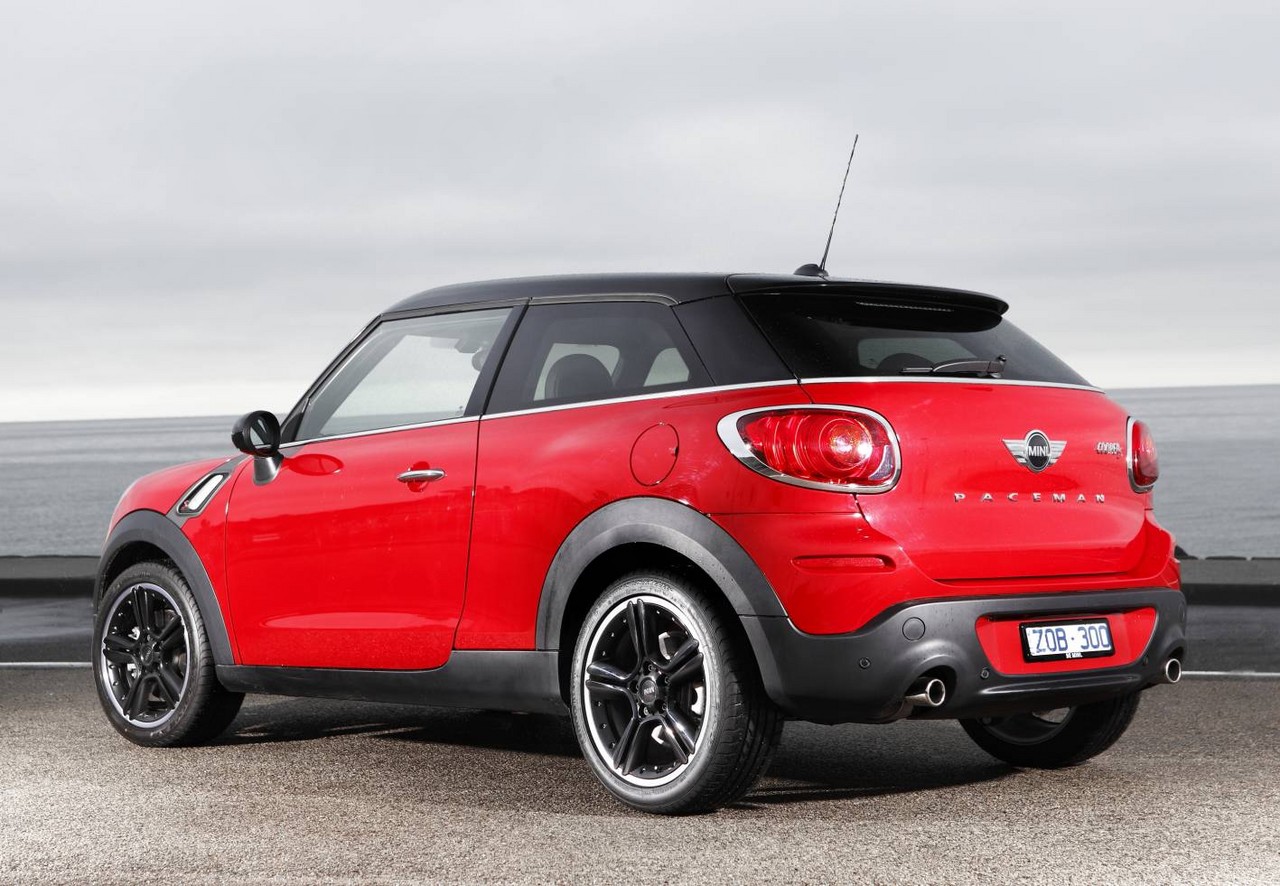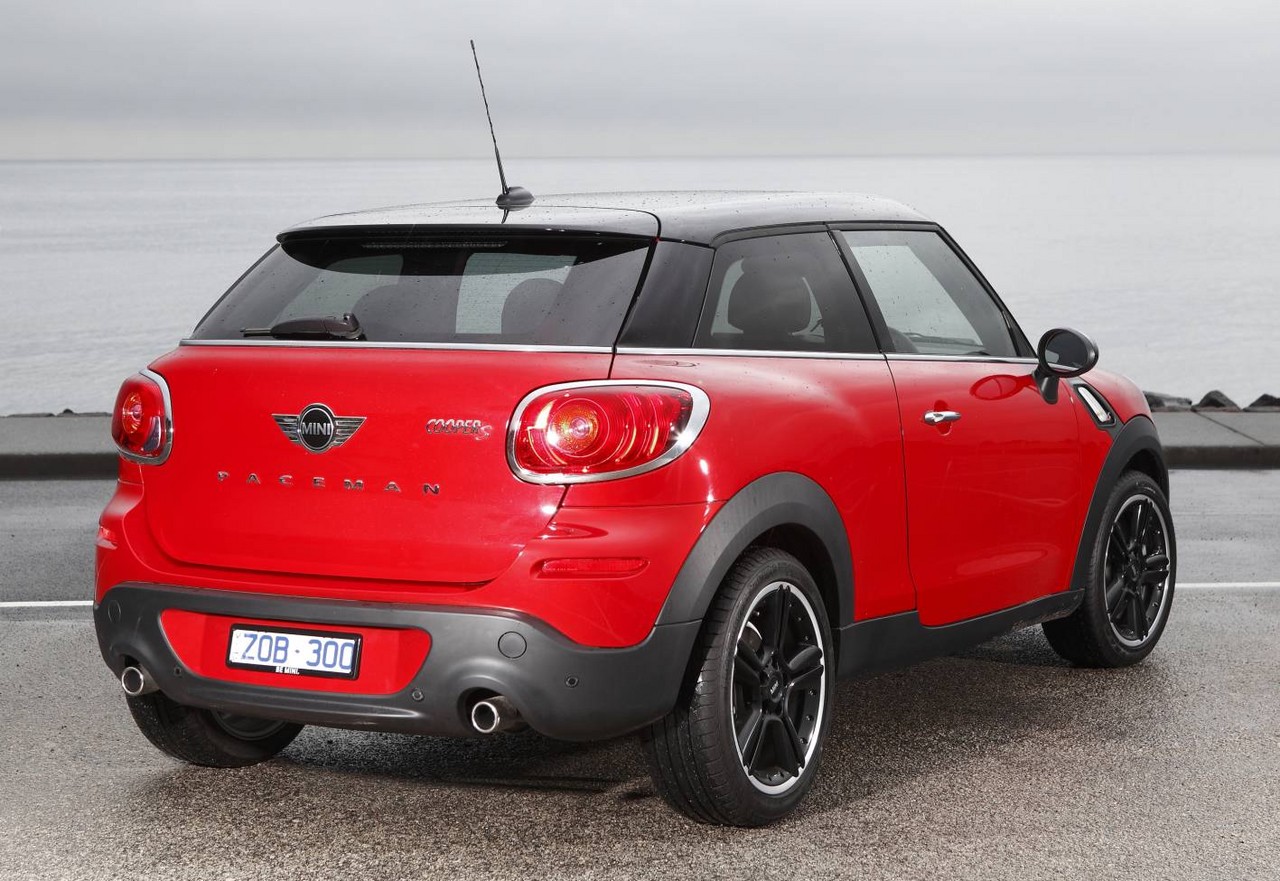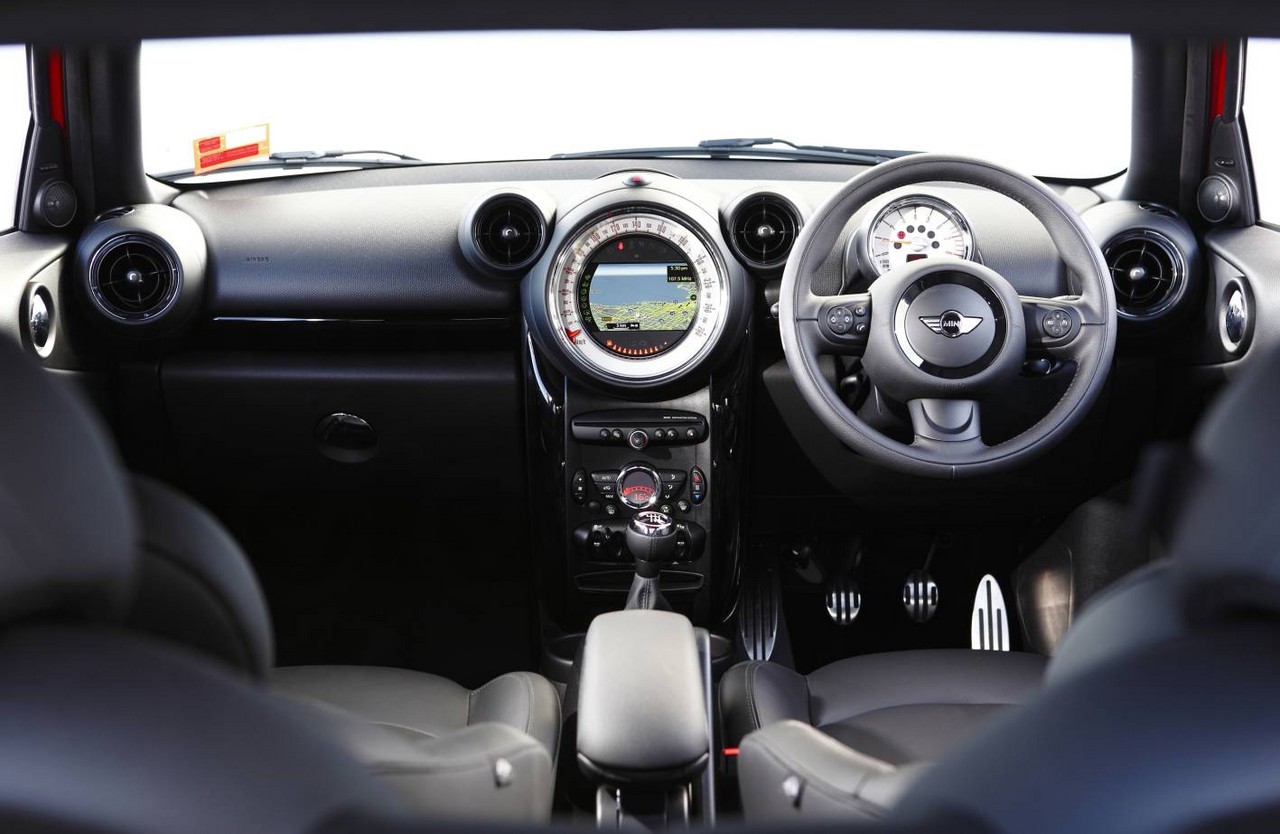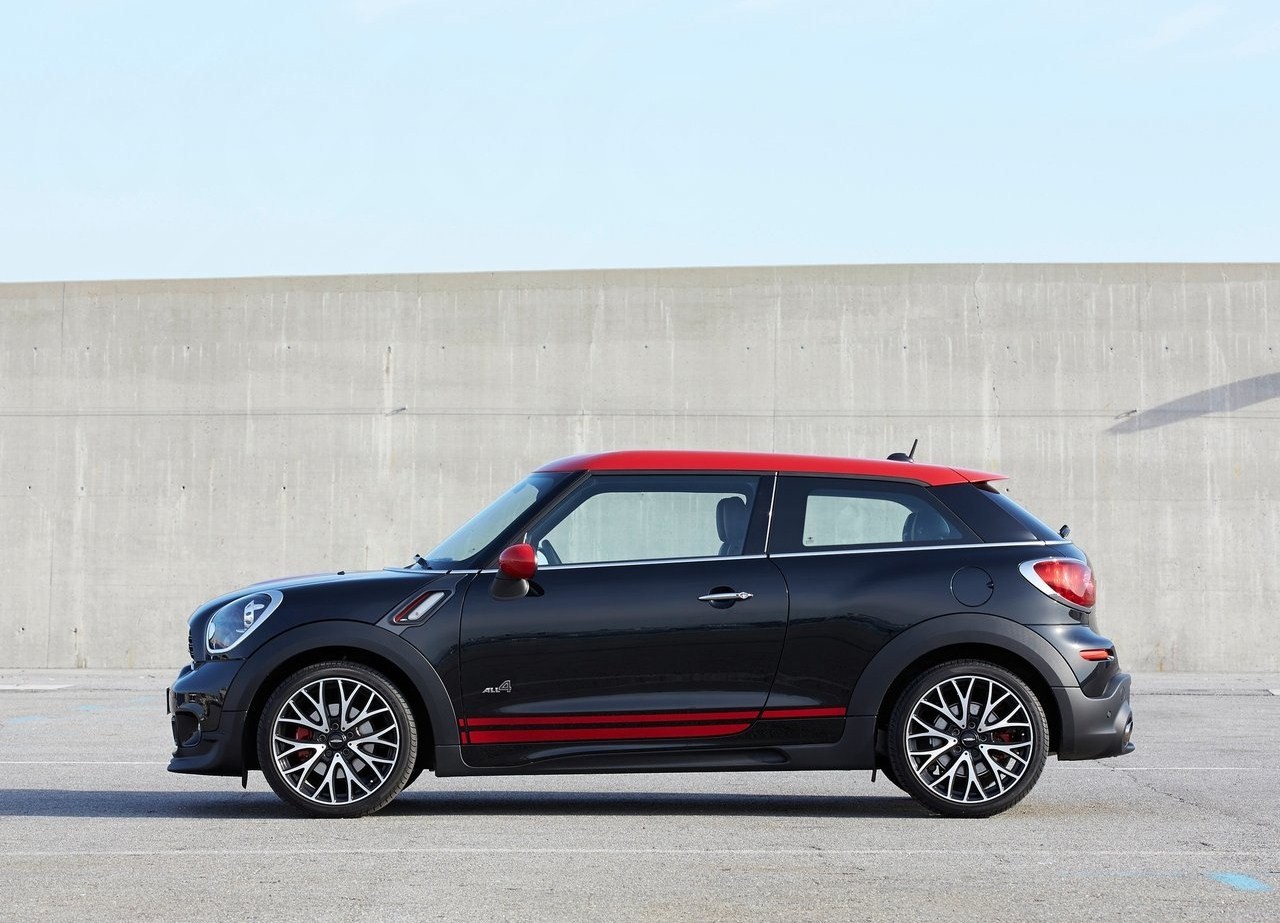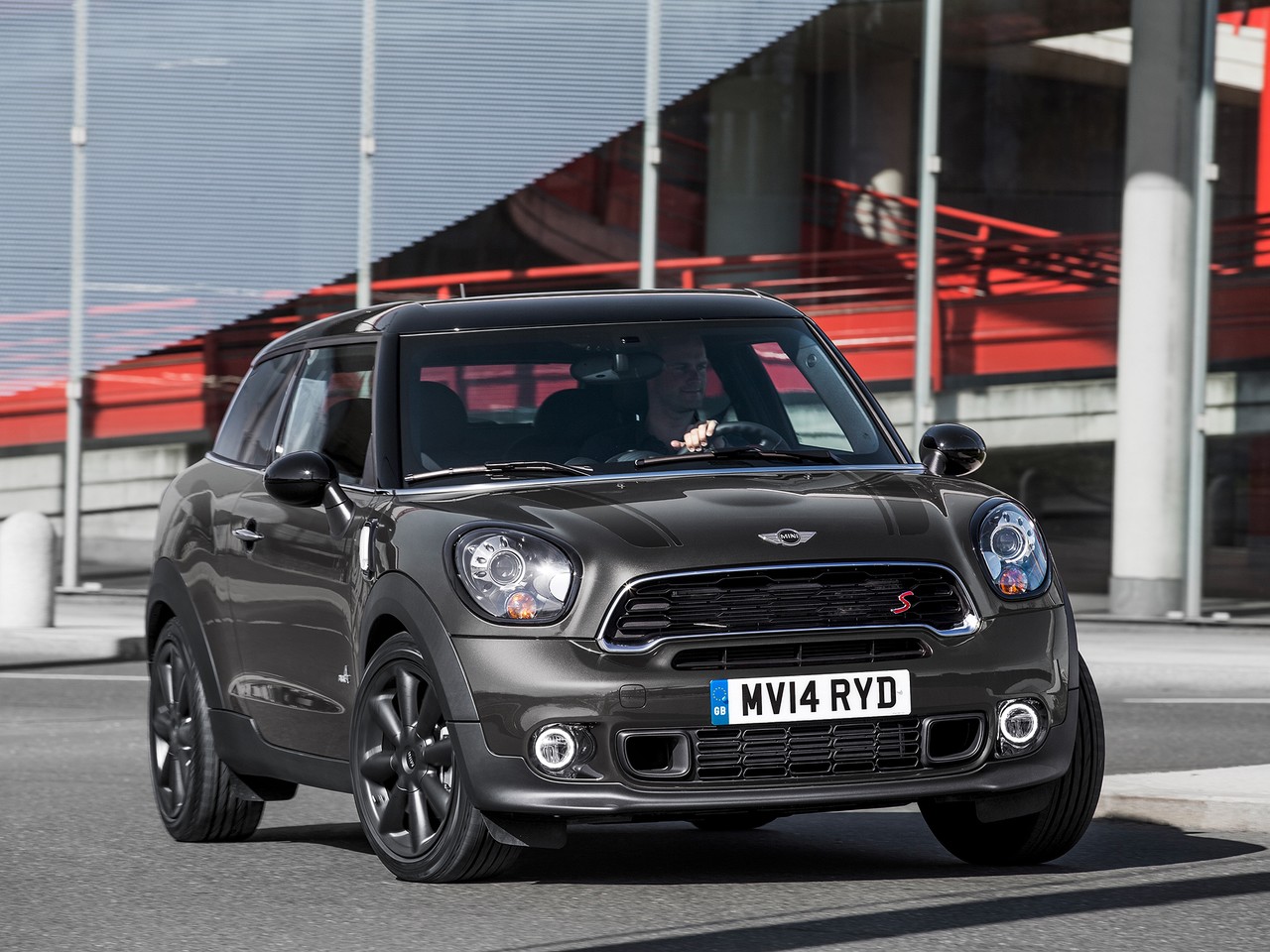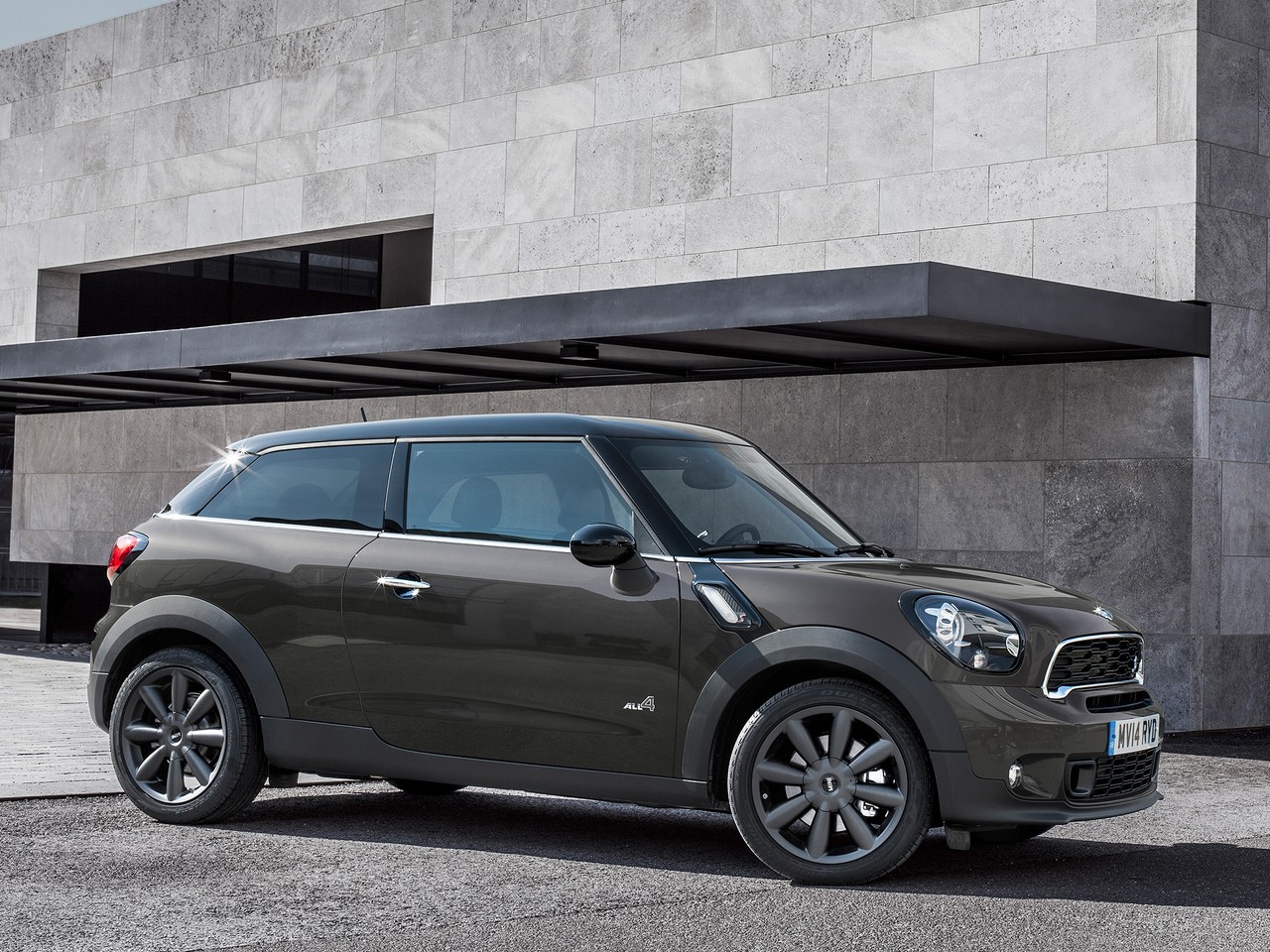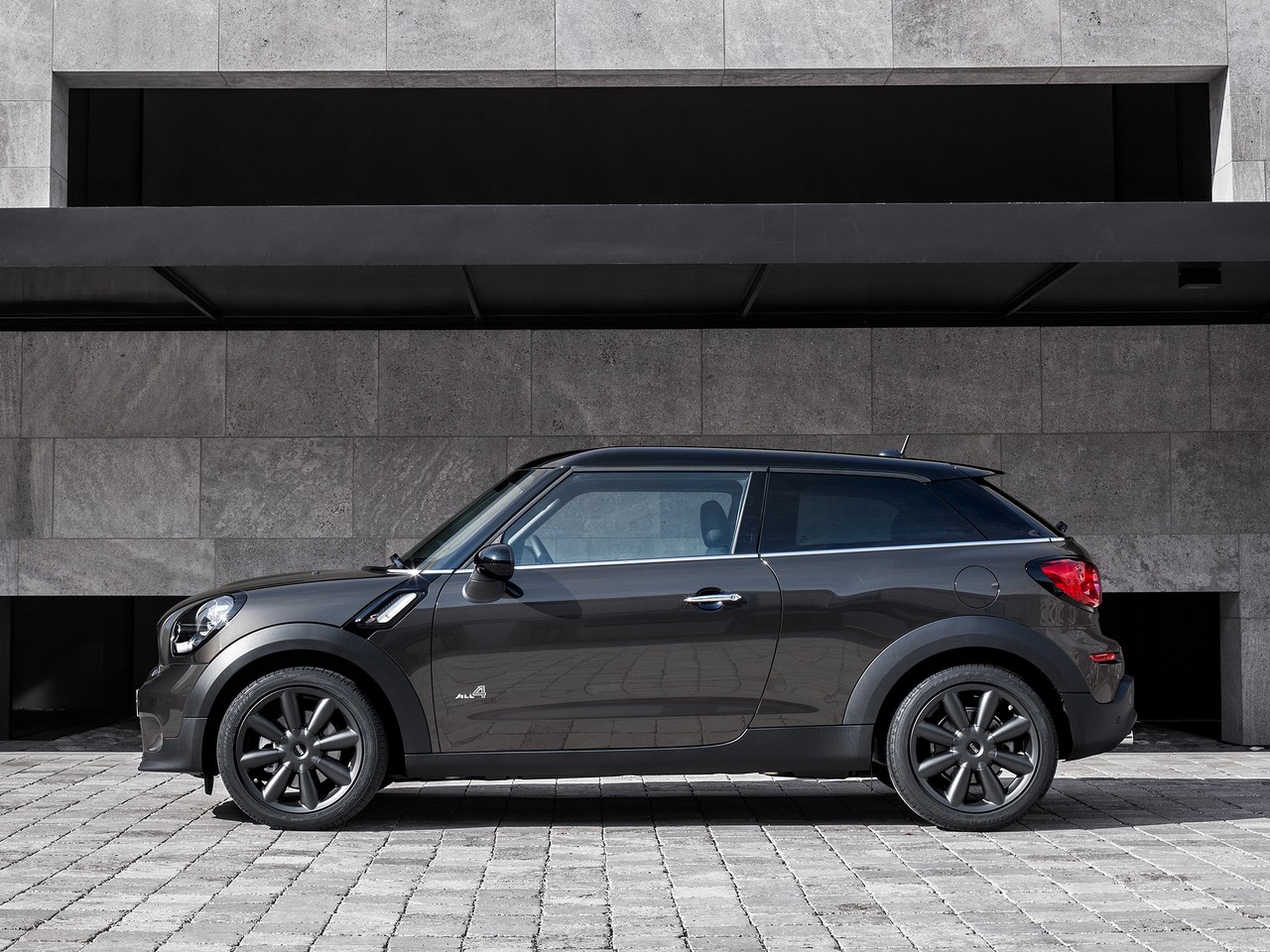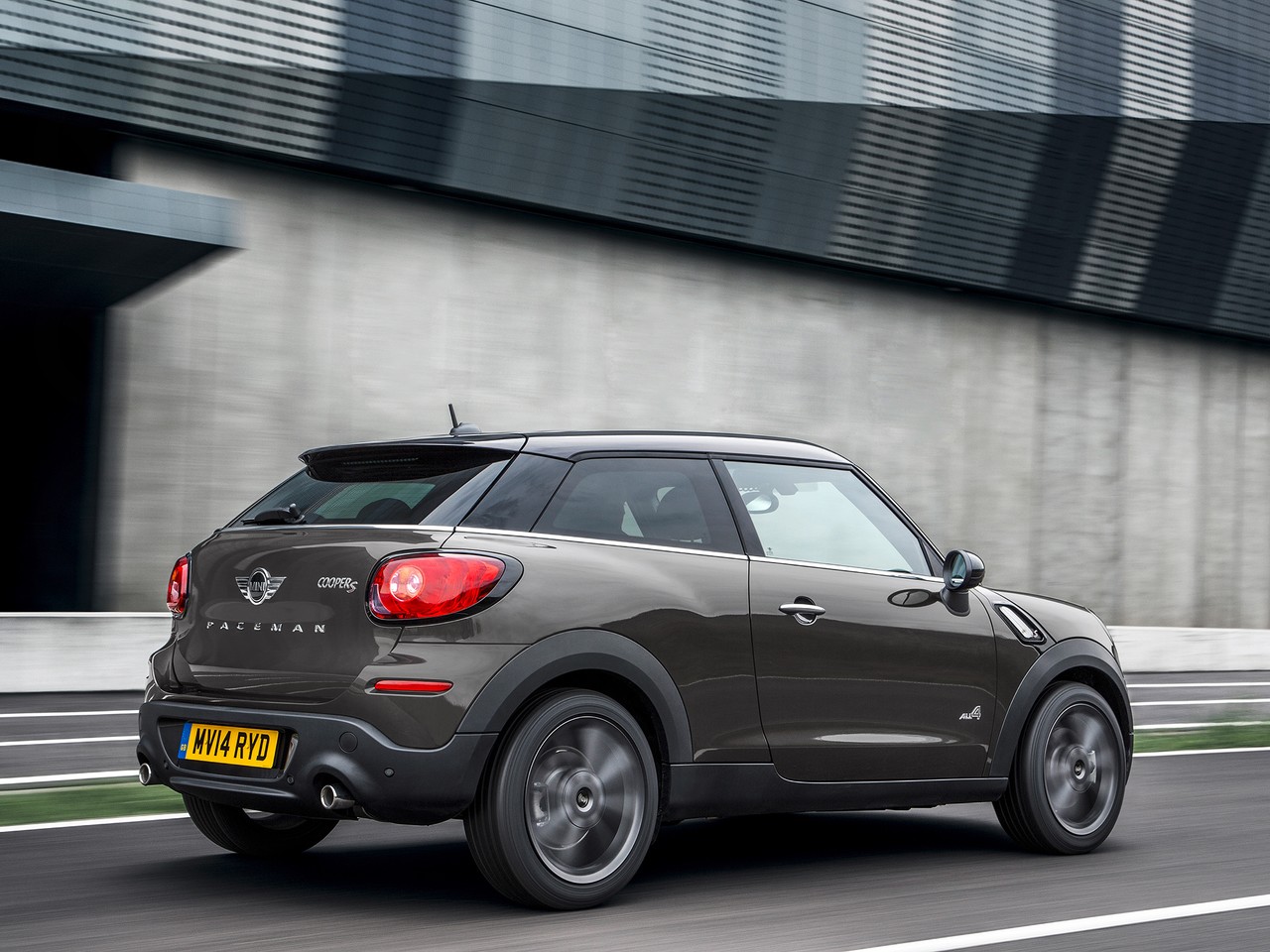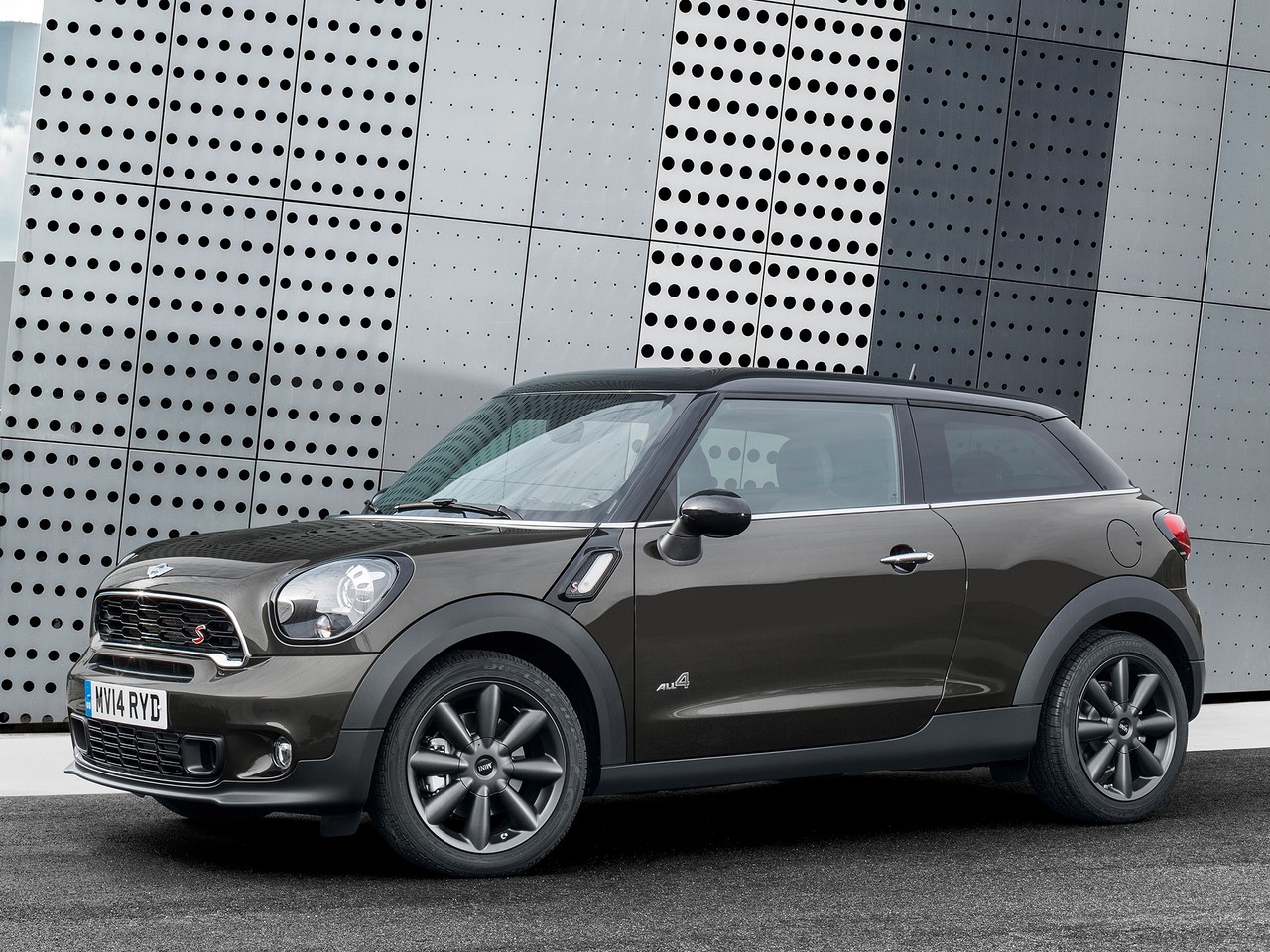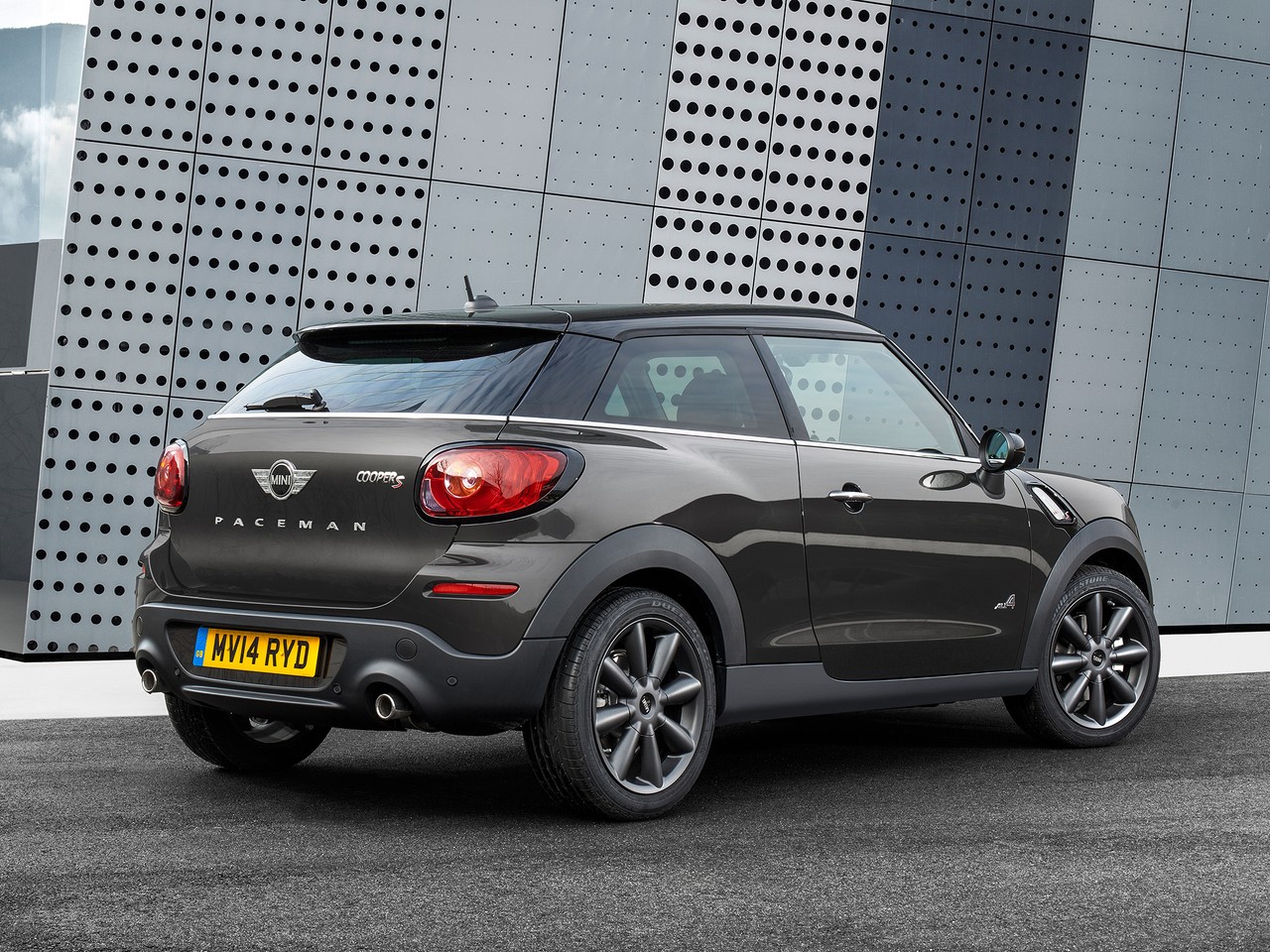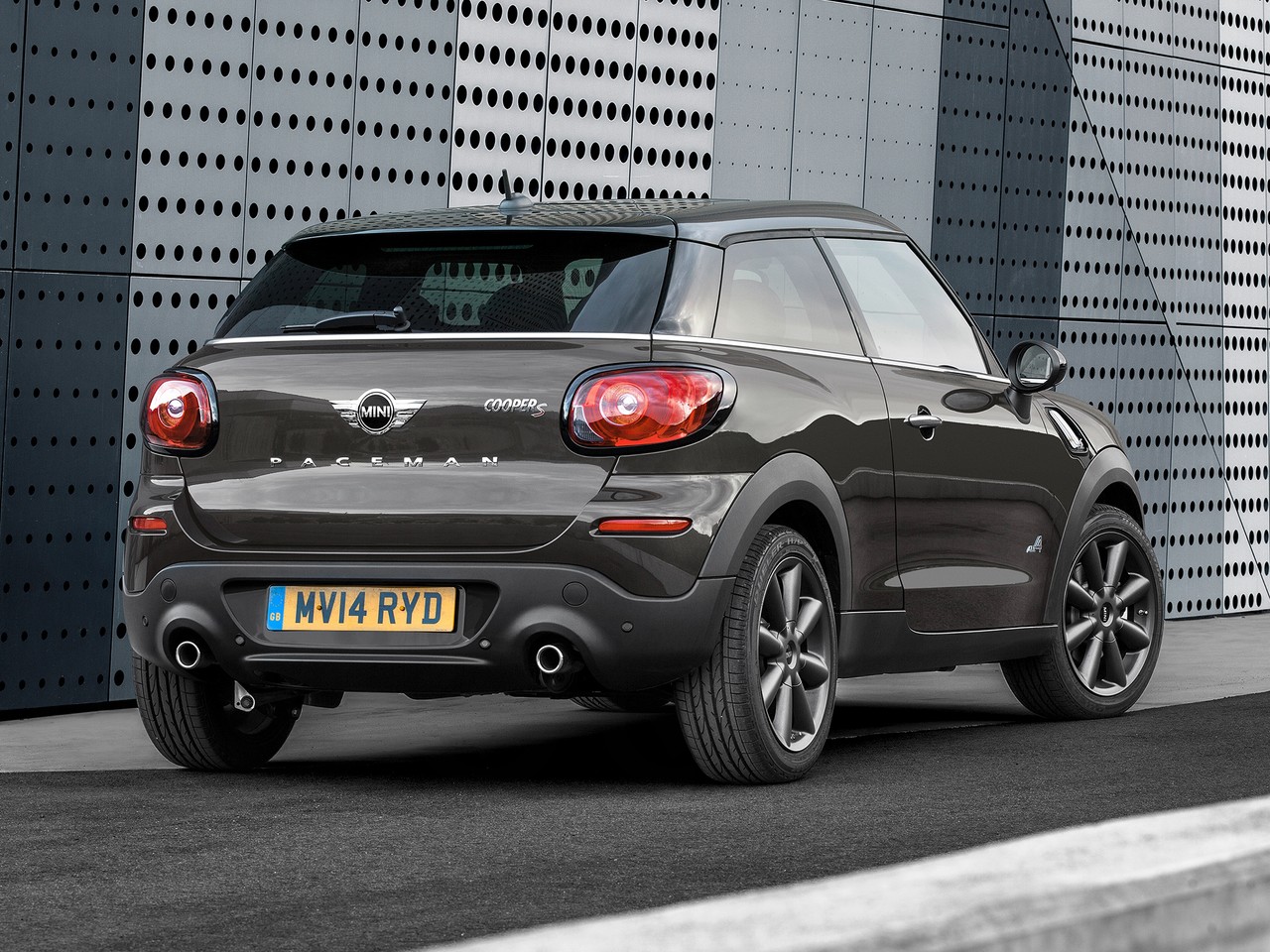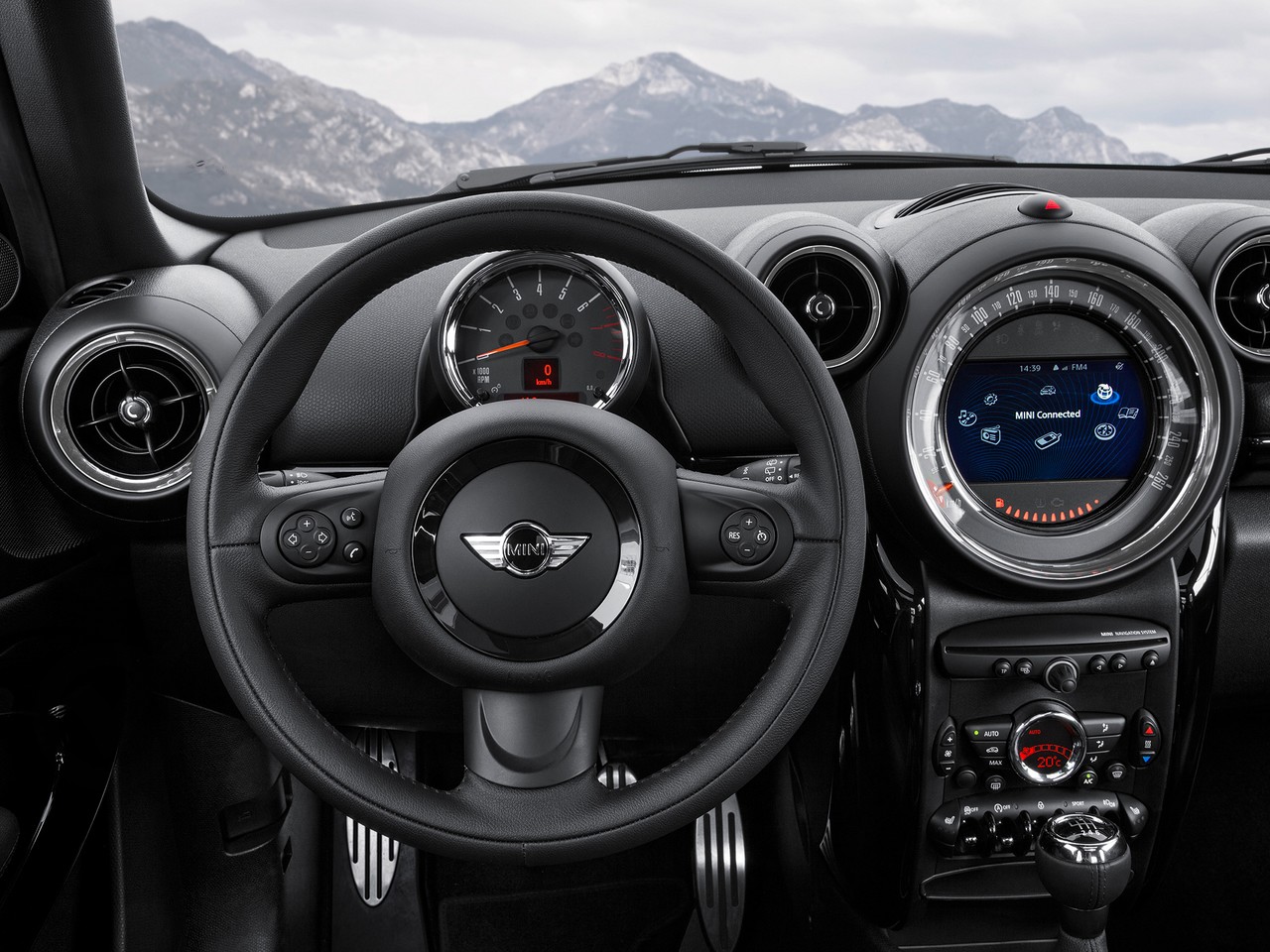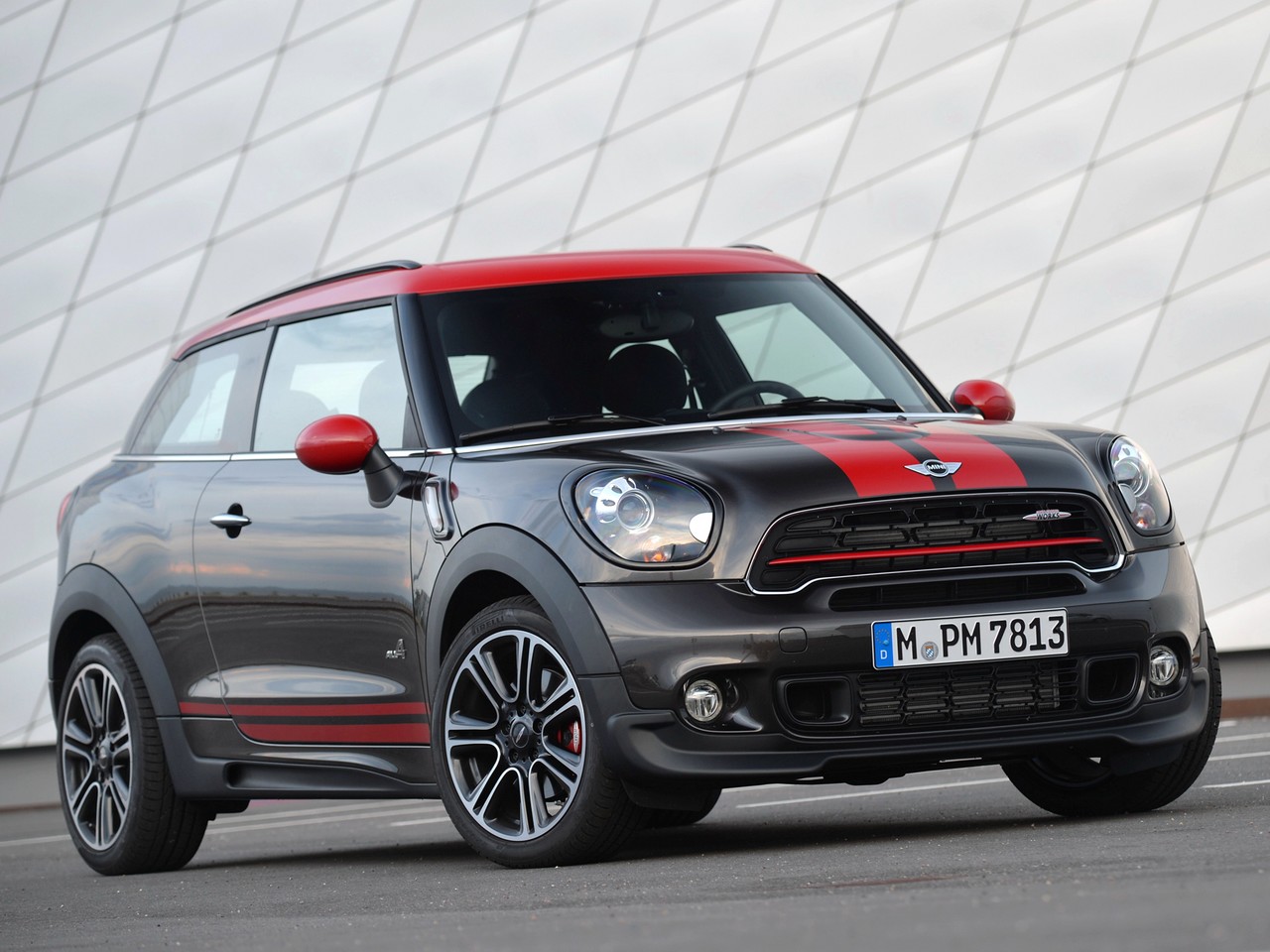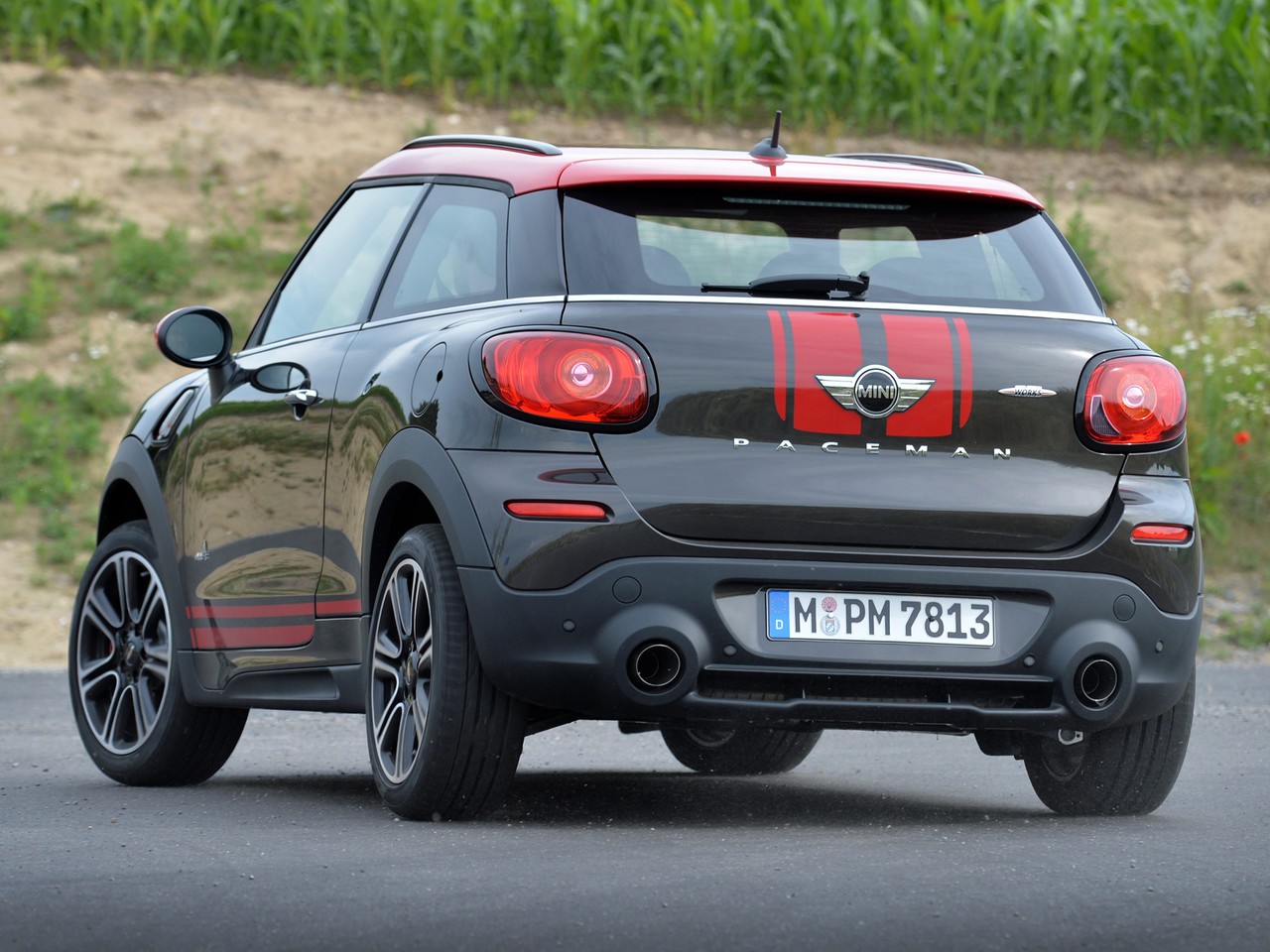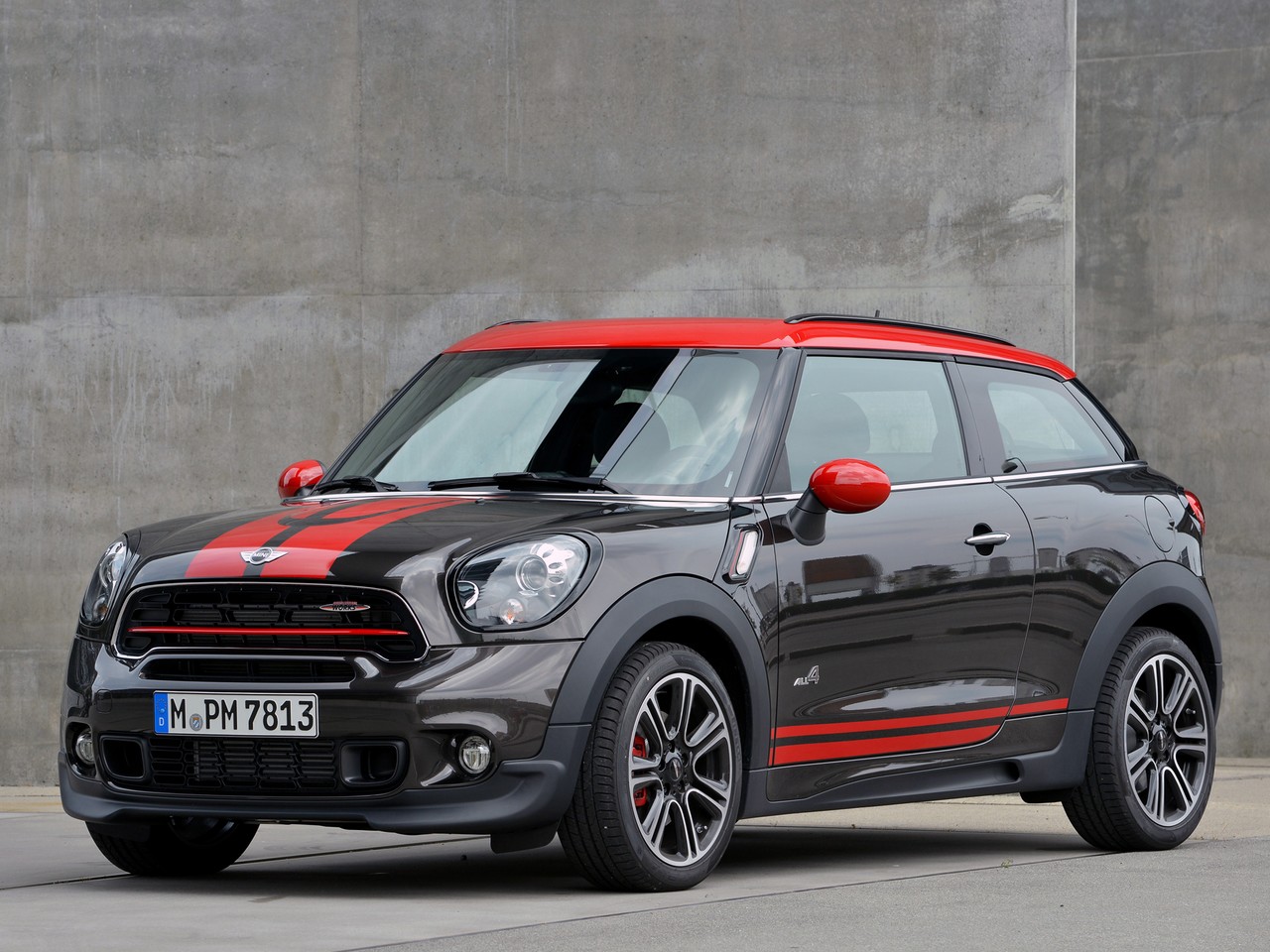
- Responsive turbocharged petrol engines
- Impressive ride/handling balance
- Accurate, fast-ratio steering provides good feedback
- Underpowered 1.6-litre naturally aspirated petrol engine
- Cabin lacks sound insulation
- Cheap interior plastics
- Cramped rear seats
- For petrol engines, reports of premature wear of the timing chain tensioner
Review: Mini R61.I Paceman (2013-14)
Overview
Released in March 2013, the Mini R61 Series I (R61.I) Paceman was a three-door, four-seat hatchback. Manufactured in Graz, Austria, the Paceman range initially consisted of Cooper and Cooper S variants, powered by 1.6-litre naturally aspirated and turbocharged petrol engines respectively. In May 2013, however, the Paceman range was expanded with the introduction of a John Cooper Works variant.
Engines
Of the engines,
- the Cooper variants had a naturally aspirated, 1.6-litre ‘Prince’ engine with a cast aluminium cylinder block, double overhead camshafts, four valves per cylinder, variable intake valve lift (based on BMW’s ‘Valvetronic’) and a compression ratio of 11.0:1;
- the Cooper S engine added a twin-scroll turbocharger (with boost pressure limited to 0.8 bar), common-rail direct injection, infinite intake camshaft adjustment, sodium-filled outlet valves (for greater cooling) and the compression ratio was lowered to 10.5:1; and,
- the John Cooper Works variant had the same engine as the Cooper S but with a stronger cylinder head and valves, boost pressure increased to 1.2 bar, a modified air intake, free-flowing exhaust, and a compression ratio of 10.0:1.
Both engines were available with six-speed manual and automatic transmissions, the latter featuring a sequential shift function (‘Steptronic’). Furthermore, both the Cooper and Cooper S variants had Brake Energy Regeneration, electric power steering and on-demand operation of ancillary components to minimise fuel consumption; models with manual transmissions also had an ‘Auto Start/Stop’ which enabled the engine to shut down when the vehicle was stationary.
Dimensions
Compared to the R60 Countryman with which it shared its platform, the R61 Paceman was 12 mm longer (at 4109 mm), 3 mm narrower (1786 mm), 43 mm lower (1518 mm) and had a 1 mm longer wheelbase (2596 mm). Inside, the Paceman’s front seats had a slightly elevated seating position and, in the rear, there were two full-size individual seats. Furthermore, targo capacity for the Paceman was 300 litres, though this increased to 1080 litres when the rear seat backrests were folded down.
Suspension
The Paceman had MacPherson strut front suspension (with forged cross members) and multi-link rear suspension; while lowered sports suspension was fitted as standard, a more compliant and higher riding suspension configuration was available as a no-cost option.
| Variant | Drive | Engine | Trans. | Peak power | Peak torque |
|---|---|---|---|---|---|
| Cooper | FWD | 1.6-litre petrol I4 | 6sp man., 6sp auto |
90 kW at 6000 rpm | 160 Nm at 4250 rpm |
| Cooper S | FWD | 1.6-litre turbo petrol I4 | 6sp man., 6sp auto |
135 kW at 5500 rpm | 240 Nm at 1600-5000 rpm (Overboost: 260 Nm at 1700-4500 rpm) |
| John Cooper Works | AWD | 1.6-litre turbo petrol I4 | 6sp man., 6sp auto |
160 kW at 6000 rpm | 280 Nm at 1900-5000 rpm (Overboost: 300 Nm at 2100-4500 rpm) |
ALL4 and EDL
For the R61 John Cooper Works Paceman, the ‘ALL4’ all-wheel drive system utilised a propeller shaft that extended from the front axle to an electro-magnetic clutch mounted on the rear axle. While the propeller shaft was constantly driven, the ALL4 system directed the engine’s torque to the front wheels in normal conditions. If, however, front wheel slip was detected or the vehicle was being driven ‘enthusiastically’, the electro-magnetic clutch could engage to direct torque to the rear axle. According to MINI, the amount of torque supplied to the wheels was ‘infinitely variable between one per cent and 100, depending upon the driving conditions’.
In addition to the ALL4 all-wheel drive system, the John Cooper Works Paceman had two other traction devices:
- When the electronic stability control system was deactivated, an electronic locking function for the front differential would operate to brake a spinning wheel – this function was known as an Electronic Differential Control Lock (EDLC); and,
- Dynamic Traction Control (DTC) allowed controlled slip through the driven wheels to aid moving off on loose sand or deep snow.
Safety equipment
Standard safety equipment for the R61 Paceman included dual front airbags, front seat-mounted side airbags, full-length curtain airbags, ABS, electronic brake force distribution, brake assist, electronic stability control, traction control, cornering brake control and front seatbelts with pretensioners and load limiters.
Brakes
Of the braking packages:
- The Cooper had with 294 mm by 22 mm ventilated front brake discs and 280 mm by 10 mm solid rear discs;
- The Cooper S had 307 mm by 24 mm ventilated front brake discs and 280 mm by 10 mm solid rear discs; and,
- The John Cooper Works had 307 mm by 24 mm ventilated front brake discs and 296 mm by 10 mm solid rear discs.
Features: MINI Cooper Paceman
Standard features for the Cooper Paceman included 16-inch ‘5 Star’ alloy wheels with 205/60 R16 92H tyres, a six speaker sound system with a CD player, MP3-compatibility and auxiliary inputs (3.5 mm/USB), Bluetooth mobile phone connectivity, air conditioning, contoured front sports seats, ‘Diagonal Track’ cloth upholstery, front and rear fog lights, automatic headlights, rain-sensing wipers, split and folding rear seats, a leather-wrapped steering wheel, remote central locking, power windows and mirrors, a height and reach adjustable steering wheel, height adjustable front seats, 12 volt power outlets, a trip computer, tyre pressure monitoring and an immobiliser. Models with automatic transmissions were also fitted with steering wheel gearshift paddles.
Beyond this, the Cooper S Paceman was further equipped with 17-inch ‘Black Star’ alloy wheels with 205/55 R17 91V tyres, clear indicator lenses and stainless steel trim for the pedals and foot rest.
Finally, the John Cooper Works was distinguished by its unique 18-inch alloy wheels with 225/45 R18 tyres, ten speaker sound system, climate control air conditioning, leather seat trim, bi-xenon headlights with washers and a proximity key.
Specifications
Related links
- Press Kit: MINI R61 Paceman (September 2012)
- Press Kit: MINI R61 John Cooper Works Paceman (February 2013)
Review: Mini R61.II Paceman (2014-16)
Overview
Released in September 2014, the Mini R61 Series II (R61.II) Paceman introduced more fuel efficient, Euro 6 emissions compliant engines and improved aerodynamics.
Inside, the R61.II Paceman had upgraded upholstery and anthracite-coloured speed and display dials. For greater refinement, acoustic optimisation reduced interior road noise.
| Variant | Drive | Engine | Trans. | Peak power | Peak torque |
|---|---|---|---|---|---|
| Cooper | FWD | 1.6-litre petrol I4 | 6sp man., 6sp auto |
90 kW at 6000 rpm | 160 Nm at 4250 rpm |
| Cooper S | FWD | 1.6-litre turbo petrol I4 | 6sp man., 6sp auto |
140 kW at 5500 rpm | 240 Nm at 1600-5000 rpm (Overboost: 260 Nm at 1700-4500 rpm) |
| John Cooper Works | AWD | 1.6-litre turbo petrol I4 | 6sp man., 6sp auto |
160 kW at 6000 rpm | 280 Nm at 1900-5000 rpm (Overboost: 300 Nm at 2100-4500 rpm) |
Features
Standard features for the R61.II Paceman were extended to include Mini’s ‘Visual Boost’ radio, navigation system and a 6.5-inch screen, LED front fog lights with a daytime running function, heated door mirrors and heated windscreen washer jets.
Related links
